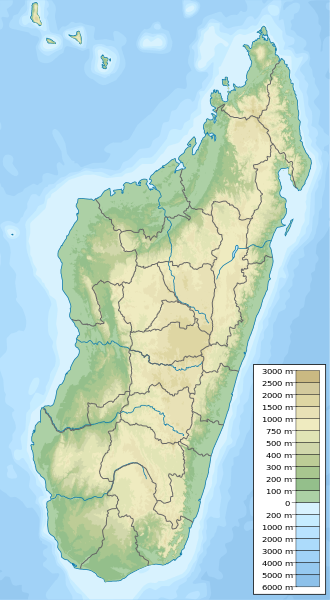| Pic d'Ivohibe Reserve | |
|---|---|
| Ivohibe Special Reserve | |
IUCN category IV (habitat/species management area) [1] | |
| Location | Ihorombe, Madagascar |
| Nearest city | Ivohibe |
| Coordinates | 22°30′S46°59′E / 22.500°S 46.983°E |
| Area | 148.15 km2 (57.20 sq mi) |
| Designation | Special reserve |
| Created | 1964 |
Pic d'Ivohibe Reserve is a wildlife reserve of Madagascar. It was created in 1964. [2]

